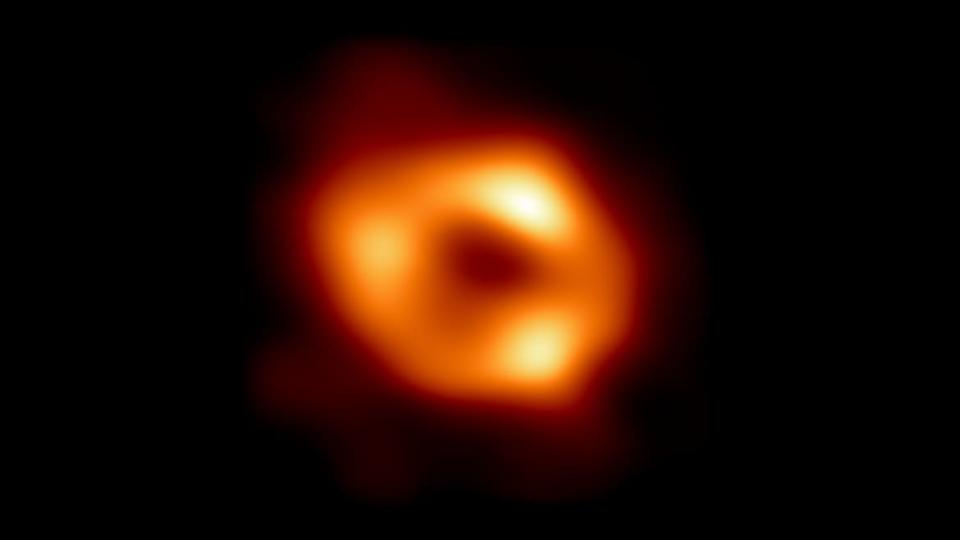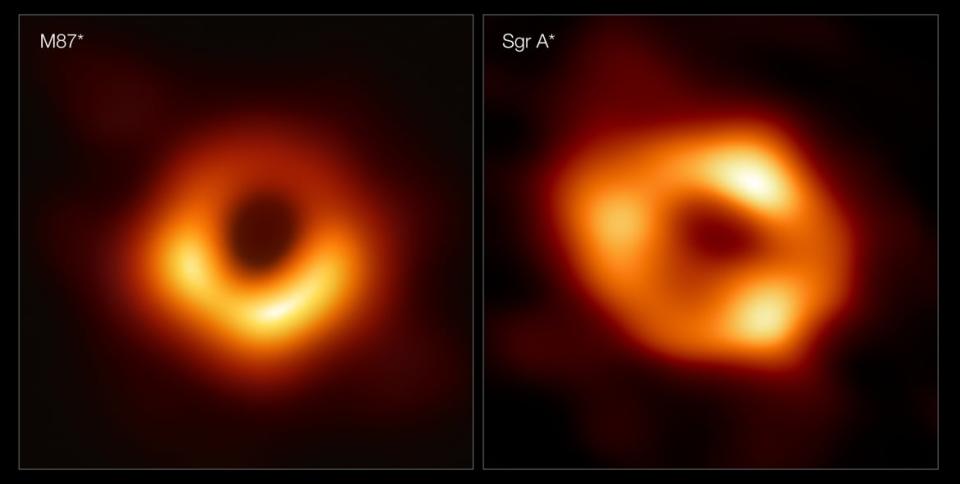Behold the Supermassive Black Hole at the Center of the Milky Way Galaxy

Three years ago, scientists revealed that they had “seen what we thought was unseeable”: a picture of a black hole. In reality, we can’t outright see a black hole—an object so dense that light cannot escape it. But what the team at the Event Horizon Telescope (EHT) managed to do was capture its bright silhouette, composed of extremely hot, super-charged gas and plasma that swirls around the black hole’s “event horizon,” or the point of no return.
On Thursday, the EHT told the world it had gone a step further and taken the first ever photo of Sagittarius A* (Sgr A*), the supermassive black hole that sits at the center of the Milky Way.
“This is the first image of the supermassive black hole at the heart of our galaxy,” Sera Markoff, an astronomer and EHT team member based at the University of Amsterdam, told reporters Thursday. “Today, we have direct evidence that this object is a black hole.”
The 2019 announcement was of the supermassive black hole at the center of Messier 87 (or M87), a galaxy 53 million light-years away from Earth. That photo was stunning in its own right, but it was admittedly shy of the electrifying illustrations of black holes that often circulate around the internet. Instead, M87 as seen by the EHT looked like a blurry orange donut.

On the left is M87*, the supermassive black hole at the centre of the galaxy Messier 87 (M87), 55 million light-years away. On the right is Sagittarius A* (Sgr A*), the black hole at the centre of our Milky Way.
But the photo did do one thing that was especially critical to astronomy and physics: it helped confirm Einstein’s theory of special relativity, which says that matter moving towards us will appear brighter than matter moving away from us.
Sgr A* is just 27,000 light-years from Earth—basically in our cosmic backyard. Yet the new photo actually looks remarkably similar to the M87 snapshot.
“We were all amazed that the image of Sgr A* looked so similar to the image of the black hole at the center of the M87 galaxy,” said Markoff. This is in spite of the fact that Sgr A* is more than 1,000 times smaller. It has an event horizon that’s 7.2 million miles long—15 times the Earth-Moon distance—with a mass 4 million times the sun. M87’s black hole is a whopping 23.6 billion miles long, and is more than 6.5 billion times as massive as the sun.
For scientists, the similarity of the two photos is far from a let down. In fact, it helps to confirm the predicted physics of these incredibly eccentric phenomena. “Once you arrive at the center of a black hole, gravity takes over,” said Markoff.
Both photos were taken using the same ingenious method of creating an approximate telescope the size of the Earth. EHT isn’t a singular instrument—it’s actually a network of eight radio telescope facilities from around the world, in locations like Hawaii, Chile, and the French Alps.
Combined, the network of radio telescopes provides an extremely high resolution, basically allowing astronomers to image an object the size of a donut on the moon.
The central region of the Milky Way, in the direction of Sgr A*, is composed of about 10 million stars that orbit the black hole, but visible light emanating from this location has always been obscured thanks to interstellar dust. We’ve never had direct visual evidence of this region until now.
Got a tip? Send it to The Daily Beast here
Get the Daily Beast's biggest scoops and scandals delivered right to your inbox. Sign up now.
Stay informed and gain unlimited access to the Daily Beast's unmatched reporting. Subscribe now.

 money
money 